Looking for places to do some good trekking in the Philippines, one of the destinations that instantly won my attention was Mount Mayon. This is an active volcano located in Albay province, Bicol region, on the south of Luzon, the largest island of the Philippines. It reaches an elevation of 2,463 meters and is considered to be one of the world’s most perfectly-shaped volcanoes, owing to its nearly perfect conical geometry. Mount Mayon also holds the title of the most active volcano in the Philippines, having erupted over 47 times in the past 500 years.
So the decision to climb the volcano was taken and we ended up in Legazpi: provincial capital of Albay, situated by the southern foot of Mount Mayon. We settled in Parm View Hotel: the best budget option we found after having looked around a good deal. We spent there about a week, went on a few other adventures in the area, and got to prepare for our upcoming trekking trip up the volcano.
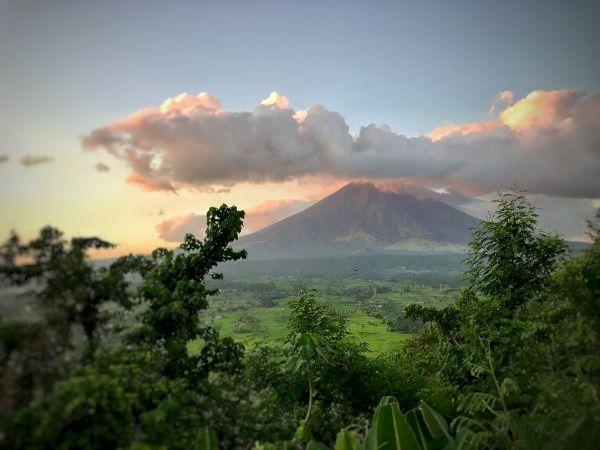
The first problem was encountered during these preparations was related to supplies. We basically needed a second sleeping bag, a head torch, and cooking gas. We found one single shop dubbed like a camping store in Legazpi but in reality they sold nothing but day bags. We looked in every mall, as well as online, but had no luck. Only managed to find a pretty useless (as far as trekking through the jungle at night is the desired use), sort of toy torch for about a dollar. Instead of a sleeping bag, we got to borrow a blanket from the hotel. And as for food, we could do with bread and tins for the two days the trip would last. All solved.
The second and most serious problem, though, arose when the time came to look for information. We soon found out that climbing Mount Mayon has been prohibited since 2-3 years ago due to increased volcanic activity. And all tour companies have suspended operation. We didn’t care much about this bit as we weren’t planning on going up there on an organized tour with a guide and stuff, anyway. We were only looking for information with the regard to trails’ condition, water sources en route, volcanic activity, etc… but there was none to be found. We found a few numbers that supposedly belonged to the national park but nobody ever answered.
Anyway, a hot sunny morning, after the storms of the last couple of days had receded, we shouldered our backpacks and headed for the crater. We decided to try the New Lidong Trail, merely because it was called new, thus assuming that it must be the best maintained as well.
We proceeded to Legazpi’s main bus station and got on a jeepney to Santo Domingo. Shortly before entering the village, we hopped off at a spot right in front of a Coconut factory (coordinates: 13.2203, 123.7571). That’s where the New Lidong Trail begins.

We followed the road for about half a km and then got on the riverbed. We soon located the trail running by the right bank and got onto it. The only problem, we soon figured out, there wasn’t much of a trail left. Apparently, that trail hasn’t been used at all for a number of years and has been left to be devoured by the jungle.
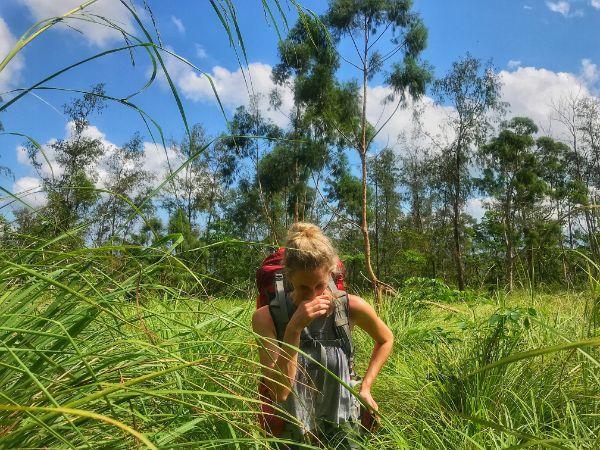
It was a pretty hard way up: more of a fight onwards, constantly pushing our way against the dense vegetation, clambering over and crawling under fallen trunks, struggling to disentangle from the thorny vines that clang on us all the damn time. As we began ascending the slope, the jungle got thicker and what was left of the trail faded even more.
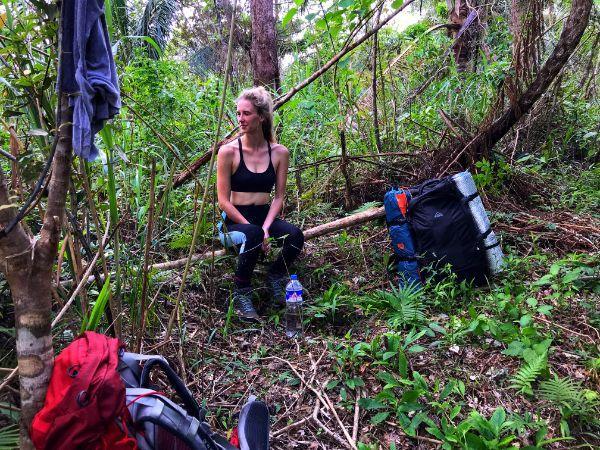
Anyhow, despite these difficulties, we managed to stay on our route pretty easily and moved ahead at a decent pace. Now, we had to deal with a graver problem: water.
There was none of it; no bloody drop. Brook after brook we crossed, but all of them were as dry as the surface of the Moon. I maintained a high hope that we’ll eventually find water in Basud River, by which we intended to spend the night, but nope; bone dry.
We finally made it to Camp 1 shortly before sunset. The plan was that we sleep there for a few hours, wake up at around midnight, leave most of our stuff there, and take the steep climb overnight to reach the crater by sunrise. But this, unfortunately, wasn’t going to happen – unless we fancied dying from dehydration on some sulfur-stinking, ashy slope. The new plan: we sleep and head straight back down, first thing in the morning – and we’d still go thirsty.
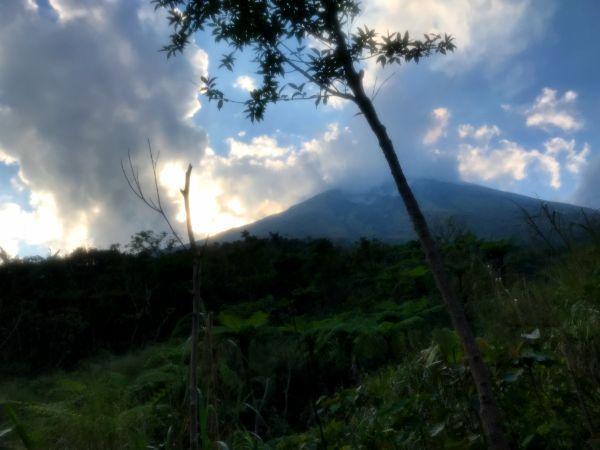
It was a magical night in the depths of the jungle anyway. It was warm and dry, so that we could leave the tent uncovered and stare at the deluged with stars sky and the occasional fireflies through the net. Various night birds of the rainforest kept chanting their funky tunes until dawn. An army of mosquitos went bonkers, tirelessly circling the tent in search of an opening that they would never find.
The sun rose and we headed back down again. Instead of the messy jungle trail, we decided to follow the dry riverbed instead. We had to suffer a good deal of relentless heat but we eluded the additional muddle, the thorns, the scratches, and the itching. And we made it to the road much faster.
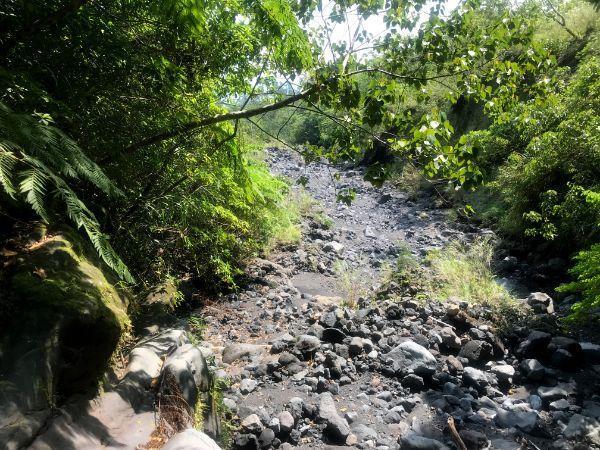
So did this attempt to climb to the crater of Mount Mayon end rather ingloriously. I reckon that, had we done it in some wetter season, we would have fared much better.
Accommodation and Activities in The Philippines
Stay22 is a handy tool that lets you search for and compare stays and experiences across multiple platforms on the same neat, interactive map. Hover over the listings to see the details. Click on the top-right settings icon to adjust your preferences; switch between hotels, experiences, or restaurants; and activate clever map overlays displaying information like transit lines or concentrations of sights. Click on the Show List button for the listings to appear in a list format. Booking via this map, I will be earning a small cut of the platform's profit without you being charged any extra penny. You will be thus greatly helping me to maintain and keep enriching this website. Thanks!
